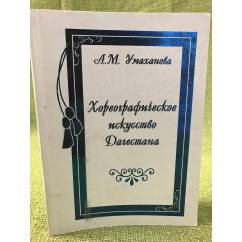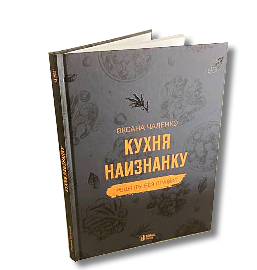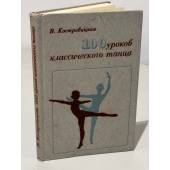
Cart
0
Product
Products
(empty)
No products
Free shipping!
Shipping
0,00 €
Packing fee
0,00 €
Total
Product successfully added to your shopping cart
Quantity
There are %d items in your cart. There is 1 item in your cart.

Categories
- Albums (2085)
- Antique (before 1850) old books (before 1941) (584)
- Art and culture (5356)
- Audiobooks, compact discs (CD) (121)
- Autographed books (249)
- Board games (19)
- Books for school (4691)
-
Books in foreign languages
(8461)
- Books in Altai (4)
- Books in Azerbaijani (47)
- Books in Belarusian (46)
- Books in Bulgarian (2)
- Books in Dutch (2)
- Books in English (6635)
- Books in Estonian (10)
- Books in Finnish (7)
- Books in French (43)
- Books in Georgian (37)
- Books in Greek (2)
- Books in Hungarian (6)
- Books in Italian (12)
- Books in Japanese (7)
- Books in Karelian (3)
- Books in Kyrgyz language (6)
- Books in Latvian (46)
- Books in Lithuanian (7)
- Books in Norwegian (4)
- Books in Polish (14)
- Books in Portuguese (2)
- Books in Slovak (2)
- Books in Spanish (17)
- Books in Swedish (3)
- Books in Tajik (34)
- Books in the Adyghe language (3)
- Books in the Balkar language (8)
- Books in the Bashkir language (73)
- Books in the Buryat language (5)
- Books in the Kalmyk language (8)
- Books in the Karachai language (1)
- Books in the Komi language (5)
- Books in the languages of the peoples of the Caucasus (7)
- Books in the Mari language (17)
- Books in the Mokshan language (1)
- Books in the Mordovian language (3)
- Books in the Nogai language (1)
- Books in the Tatar language (101)
- Books in the Udmurt language (10)
- Books in the Yakut (Sakha) language (27)
- Books in the Yarzyan language (2)
- Books in Ukrainian (971)
- Books in Uzbek (9)
- Chuvash language books (29)
- Kazakh language books (8)
- Business. Economy (1624)
- Calendars (41)
-
Children's Literature
(10352)
- Books for parents (354)
-
Children's creativity and leisure
(918)
- Children's games. Experiments and experiments (15)
- Coloring pages (12)
- Crafts, cooking for children (6)
- Drawing for children (11)
- Make with your own hands (29)
- Modeling, application (7)
- Organization of children's parties (2)
- Origami, paper craft (5)
- Puzzles, crosswords for kids (7)
- Questionnaires, diaries, albums (1)
-
Educational and educational literature for children
(1734)
- Attention. Imagination. Memory (27)
- Basic security (4)
- Creative development (46)
- Foreign languages (102)
- General development. Manuals, reference books (83)
- General preparation for school (45)
- Introduction to the outside world (69)
- Logic. Thinking (31)
- Math and counting (43)
- Teaching reading and writing (91)
-
Educational literature for children
(771)
- Biographies for children (37)
- Books for boys (21)
- Books for girls (19)
- Culture, art, religion (48)
- Encyclopedias, reference books and other educational literature for children (182)
- History for children (86)
- Nature and the environment (243)
- Psychology. Etiquette (12)
- Science, technology, transport (54)
-
Fiction for children
(4332)
- Books for kids (111)
- Books on cartoons and films. Comics (81)
- Detectives and adventures for children (193)
- Foreign prose for children (307)
- Myths. Legends. Historical prose for children (69)
- Poetry for children (147)
- Russian prose for children (415)
- Science Fiction, Fantasy and Horror for Kids (118)
- Tales (505)
- Tales and stories about animals (144)
- Soviet children's books (900)
- Toy books (40)
- Collected works. Multivolume editions (3671)
- collection sets (53)
- Comics (53)
- Cookery (1367)
- Dictionaries. Phrasebooks (1324)
- Electronic books (10)
- Encyclopedia (1019)
- Engravings (7)
- Feng Shui (112)
- Fiction (84389)
- German and Germany (35655)
- gramophone records, vinyl (131)
- Guides (2047)
- Healthy lifestyle. Healthy eating. Fitness (1801)
- History (9765)
-
House. Life. Leisure.
(7679)
- Dom. Life (3168)
- Erotic books, books about sex, kamasutra (193)
- Hobby. Leisure (1657)
- Reference Literature (2160)
-
Sport
(958)
- Aerobics. Fitness. Yoga. Dancing (31)
- Board games (158)
- Combat and martial arts (82)
- Extreme sports (12)
- Gymnastics. Light and weightlifting (8)
- Olympic Games (13)
- Other sports (51)
- Physical culture and sport (73)
- Self-defense. Survival (20)
- Sport games (23)
- Tourism (85)
- Water sports (28)
- Winter sports (18)
- Kits (different books) (139)
- Kits (magazines) (60)
-
Magazines and newspapers
(2551)
- Architecture, interior (9)
- Astrology, esotericism (35)
- Bills (233)
- Calendars 2020 (1)
- Calendars 2021 (3)
- Cars, hunting, fishing (15)
- Celebrities, ZhZL (33)
- Children's magazines (12)
- Computer, technology (4)
- Cooking and Recipes (25)
- Crosswords, Scanwords (2)
- Editions with TV program (133)
- Entertainment magazines (7)
- Fashion, style, beauty (17)
- History (111)
- Hobbies, interests (104)
- Home, family, leisure (74)
- House, garden, vegetable garden (34)
- Literature, theatre, music (235)
- Magazines for men (211)
- Magazines for parents (2)
- Magazines for women (108)
- Medicine, health (153)
- Religion (10)
- Russian press abroad (480)
- Science, technology, fantasy (168)
- Sewing, knitting, needlework (8)
- Society, politics (636)
- Special Editions (57)
- Travel, countries (14)
- Maps, atlases (663)
- Military business. Weapons. Special services (4061)
- Miniature books (148)
- Music. Sheet music (1043)
- Postage stamps (92)
- Postcards (191)
- Posters (37)
-
Professional, educational literature
(24613)
-
Applied sciences. Technique
(2514)
- Agriculture. Veterinary medicine (40)
- Architecture (358)
- Chemical industry (104)
- Construction (445)
- Design (136)
- Energy (68)
- Engineering. Instrumentation (184)
- Food industry (19)
- Jewellery (22)
- Life safety (46)
- Light industry (39)
- Metallurgy (28)
- Mining (83)
- Nanotechnologies (5)
- Oil and gas industry (53)
- Other industries (101)
- Polygraphy (8)
- Radio engineering. Electronics. Communication (263)
- Technical Sciences (330)
- Technology of production (100)
- Timber and wood chemical industry (13)
- Transport (183)
-
Computer Literature
(476)
- Administration. Information security (5)
- Computer for … (16)
- Computer networks. Internet (23)
- Databases (8)
- Design systems (CAD/CAM) (1)
- General questions (41)
- Graphics, design, multimedia, games (27)
- Hardware (4)
- Informatics (27)
- MS Office. Microsoft office programs (11)
- Operating systems (12)
- PC work for beginners (18)
- Programming languages and environments (37)
- Humanities (8820)
-
Legal Literature
(996)
- Civil law (54)
- Civil procedural law. Judiciary (8)
- Comments (12)
- Constitutional law. Administrative law (30)
- Criminal law (40)
- Criminology. Criminalistics (37)
- Customs law (8)
- Financial law (11)
- International law (34)
- Labor law. Social security law (9)
- Land law. Environmental law (3)
- Law enforcement agencies (23)
- Law in general. History and theory of state and law (29)
- Other branches of law (23)
- Regulatory acts. Reference literature (19)
- Right in everyday life (17)
- Textbooks and teaching aids (43)
- Workshops and practical aids (6)
-
Medicine and Health
(2417)
- Applied Medicine (43)
- Clinical Medicine. Internal Medicine (21)
- Cosmetology (20)
- Fundamentals of Medicine. Healthcare System (26)
- General pathology. General therapy (19)
- Narcology (12)
- Nervous system (29)
- Other branches of medicine (89)
- Pediatrics (51)
- Pharmacology. Toxicology (21)
- Popular and alternative medicine (1119)
- Psychiatry. Neuropathology. Sexopathology (71)
- Surgery (18)
- Monographs (1110)
- Natural sciences. Mathematics (2222)
- Social Sciences (5565)
-
Applied sciences. Technique
(2514)
- Religion. Esotericism (6363)
- Russian Abroad (books published abroad) (2598)
- Russian language (774)
- Russian language for children (Textbooks) (155)
- Soviet books until 1992 (12961)
- Yoga Books (158)
- Show All

Хореографическое искусство Дагестана: генезис, традиционные формы, выразительная пластика
53969
Good Condition
Item 1
0,4 kg
Sale the same product...More info
A look at the monograph "The Choreographic Art of Dagestan" by A. Umakhanova No, no, however, the question often wakes up in me: “What is more fruitful: to devote my scientific research to one, capacious problem, or to strive for multipolarity, i.e. want to become, as they say, a multifaceted scientist, a multidisciplinary researcher? Practice shows the fruitfulness of concentration on one often life-long topic, from year to year, expanding its parameters, comprehending new depths.Indeed, there are not only individuals, but entire institutions engaged in the study of the Northern rivers, there is oceanology, the Institute of the Arctic... And in literary criticism there are many examples of devotion to a single object of study: D. Blagoy - Pushkin, D. Likhachev - the history of ancient Russian literature, etc. In this particular case, I want to say a few words of praise to Alla Musaevna Umakhanova, an employee of the Institute of Language, Literature and Art. G. Tsadasy of the Dagestan Scientific Center of the Russian Academy of Sciences - the only specialist in the field of studying the problems of choreography. Alla Musaevna - Honored Art Worker of the Republic of Dagestan, author of such innovative monographs as "Choreographic art of the Kumyks" (1991), "Choreography of the peoples of Southern Dagestan" (1993), "Choreographic art of the Dargins" (1997) and her last, fourth monograph "Choreographic art Dagestan" was released in the past, in 2006. It was published under the stamp of YALI Dag. scientific center of the Russian Academy of Sciences. For me, such facts from the biography of A. Umakhanova are new and attractive: she was the first from Dagestan to graduate from the Academy of Classical Dance (Choreographic School named after A. Ya. Vaganova) in St. Petersburg. She performed classical and character roles in ballets and operas of the Mariinsky Theater and the Maly Opera Theater in St. Petersburg. In addition to the above monographs, Umakhanova A.'s research assets include many publications in the periodicals, reports, reports at scientific conferences of various levels. The idea of the monograph I am reviewing "The Choreographic Art of Dagestan: Genesis, Traditional Forms, Expressive Plasticity" is explained by A. Umakhanova herself in the annotation preceding the book. Deciphering the author's concept here is not only appropriate, but necessary, because the attitude to the concepts of "dancing", "dancer" for many, to some extent, and for me is very simplified, if not primitive. After all, it is a fact: we often forget that dance, dances are not just jumps or circles, but art, not only captivating, but mysterious. It is not enough to admire dances, they must be felt and comprehended by a deep, hidden, sacred meaning. And A. Umakhanov is right when he incites the reader to a thoughtful reading of his many years of work. It attempts to create a coherent system of typical forms of Dagestan choreography in order to carry out the difficult work of classifying dances that are different in type, variety of performance techniques - in accordance with their specific features and characteristics. In the monograph by A. Umakhanova there are two sections, two angles - historical and modern, i.e. vertical and horizontal, and these lines are not divergent, but are interdependent like the roots and crown of a tree. The breadth of the author's idea pleases: the choreographic culture of Dagestan in the sources of the 19th-20th centuries, the forms of the ancient dance of the peoples in the structure of festivities and rituals, the traditional forms of choreography of the peoples and ethnic groups of North-Eastern Dagestan. Further, the researcher, as it were, turns off the highway onto the path (paths), i.e. resorts to a local method of considering an extensive, perhaps even global, scientific problem. This series has a specific, historical-national character: the choreographic art of the Kumyks (plain Dagestan), the dance culture of the Nogais (the steppe zone of Dagestan), the traditional choreographic culture of the Avaro-Ando-Tsez group (high-mountainous Dagestan), the traditional choreographic culture of the Dargins (piedmont and high-mountain Dagestan) , the traditional choreographic culture of the Laks (highland Dagestan) and the choreographic culture of the peoples of Southern Dagestan - i.e. dances of Lezgins, Tabasarans, Tsakhurs, Rutuls, Aguls. In this section, there is a differentiation of types of dances: round dances, imitative dances, slow dances, group dances. A. Umakhanov, - to her scientific and human honor! - Analyzing such a voluminous and colorful choreographic material, one does not give in to the temptation to give an assessment: which people dances are richer, more meaningful, more beautiful. This is the mark of a true scientist! Remaining objective is not only necessary, but also noble! There are terms "language of painting", "writer's style", "choreography style". We all remember the dances of the outstanding dancer, Hero of Socialist Labor, Chechen Makhmud Esenbaev. People of my generation who were related to the art of Dagestan in the 1960s and 1970s probably also remember how Tanho Izrailov and Sharabutdin Mantashev danced with virtuosity and originality! I am doing this digression not by chance: did they not have influence as directors and propagandists on the processes of updating (maybe even modernizing) the traditional dances of the peoples of Dagestan? I do not rule out that A. Umakhanova knows: there is; there are not only national dances. But this is a topic, as they say, that has neither end nor edge ... so let's say "thank you" to Alla Musaevna for what she did! A. Umakhanova paid special attention to the custom of holding weddings, in particular among the Kumyks, who, in addition to the strictly observed rules regarding the conduct of the wedding itself - the toy, had and survived to the present day the rules of etiquette behavior, which were given special importance. Etiquette behavior led to attentive and ceremonial treatment of women. On my own behalf, I want to add: a respectful, parity attitude towards a woman is characteristic of the dances of all the peoples of Dagestan ... Yes, in addition to the personal morality of a dancing man, any, even the slightest manifestation of liberty in relation to a woman (a glamorous look, a touch, even an accidental one, was severely punished by the brothers, girl's relatives). Even the violation of the distance between the dancing girl and the guy was condemned ... Unfortunately, all this is left in the past as nostalgia. Now the bolder the better! Yes, the states of wedding stewards - khans and his assistants - chaushs, who strictly followed the order and are endowed with the right to warning, visual punishment - up to expulsion from the wedding yard ... have long been outdated ... Frankly, I was surprised by the breadth of the scientific potential referred to by A. Umakhanova: S. Lisitsian, E. Gvarimadze, K. Golozavsky, T. Tkachenko, L. Avdeev, M. Zhornitsky, E. Petrosyan, R. Zakharov, T. Badmaev, R. Urazgeldiev and others. This means that the study of choreography is a serious science that has layers of the past and resources for the future! The monograph "The Choreographic Art of Dagestan" by A. Umakhanova has truly encyclopedic significance in terms of the scope of the material, informational objectivity, and rigor of presentation.
Data sheet
| Publisher | ДНЦ РАН. Махачкала. 2005 |
| Bookbinding | мягкий переплет, 293 стр. иллюстрации, |
All author\'s books:
Seller Info/Map |
Seller type: Company (business)
Подробнее
Book market
ISIA Media Verlag UG (L)
Volbedingstr. 2 A2-03
Leipzig, 04357
Germany
03416870612

Volbedingstr. 2 A2-03
Leipzig, 04357
Germany
03416870612













